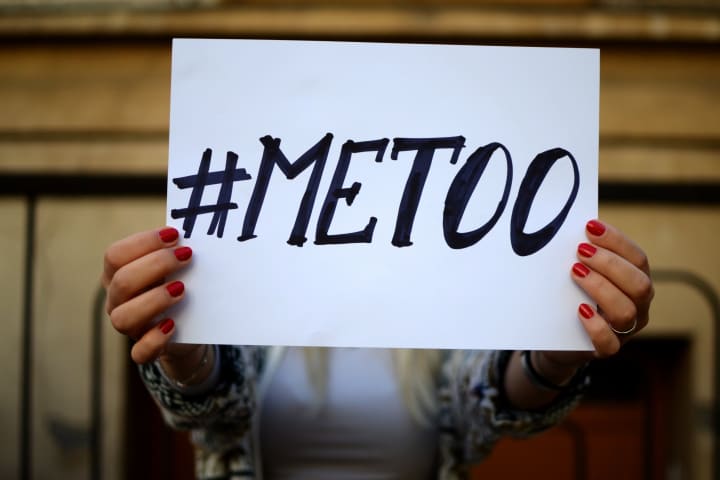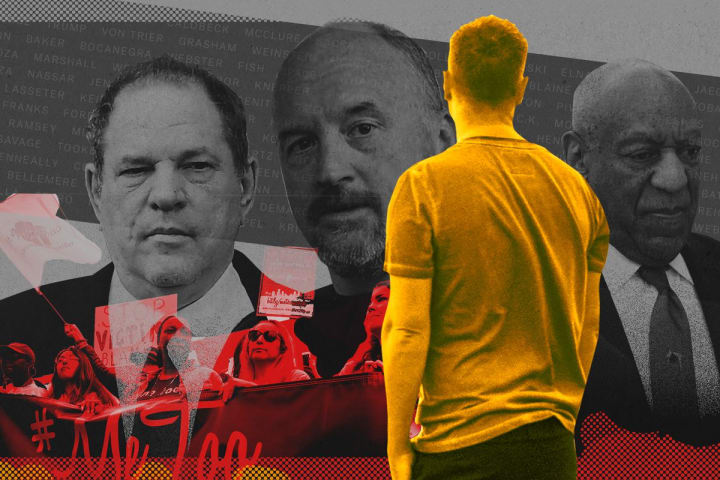#MeToo Comes to the Workplace
Sexual harassment cases are on the rise with the increased attention on the subject in the media, culture, and politics. More and more people are simply asking: What does all of this mean?

One thing we know for sure today is that the rules, the norms, the expectations—in short, everything—is changing regarding interactions of men and women!

#MeToo
Over the past year, there has probably been more focus on sexual harassment than ever before. We have seen the advent of the #MeToo movement. We have witnessed many high profile men—from Bill Cosby to Harvey Weinstein to Louis C.K. to Les Moonves and more—who have fallen from high heights due to their sexual harassment—and worse—of women. And as a reminder that sexual harassment can take place between those of the same gender, we also have the much talked about Kevin Spacey case. We have seen our divided politics somehow become even more polarized over the confirmation of Brett Kavanaugh to the Supreme Court after allegations of sexual misconduct were raised against the judge. So, unless you've been living alone on an island—which may indeed sound pretty good right about now—you've likely had to see, discuss, and think more about how you interact with those of the other gender more than you ever have in the past.

Harvey Weinstein, Louis C.K., Bill Cosby
And so it should come as a surprise to absolutely no one that with the increased focus on the issue overall, we are seeing a dramatic increase in the rate of sexual harassment cases at work actually being reported. According to a recent report from the Equal Employment Opportunity Commission (EEOC), the federal agency tasked with enforcing civil rights laws in the workplace, over the past year since the launch of the #MeToo movement, the agency has seen the number of sexual harassment charges filed increase by just over 12 percent and the number of actual lawsuits filed on behalf of victims jump by 50 percent! Just as importantly, the EEOC reports that over the past year, more people than ever are seeking information from the EEOC on the issue. In fact, the number of visits to the agency's sexual harassment info on its website have more than doubled over the past year. Yet, even with the increased focus on sexual harassment and assault issues, it is important to note that still today, the vast majority of cases are still never reported! According to the findings in a 2016 EEOC report, 7 in 10 of those who believe that they have been subject to sexual harassment in the workplace never file a formal complaint with their employer (see: EEOC Select Task Force on the Study of Harassment in the Workplace).
However, the findings from a major study conducted earlier this year by the Pew Research Center (see: PEW Social Trends: Sexual Harassment at Work in the Era of #MeToo) show just how prevalent—and how tricky—the whole subject of sexual harassment is today. In their research involving over six thousand participants representing a cross section of America, the Pew study found that 6 in 10 American women—and a quarter of all men—had been the subject of "unwanted sexual advances or verbal or physical harassment of a sexual nature" in their workplaces. The rate of sexual harassment—and assault—taking place outside of the work setting is, of course, sadly even higher. And yet, for all the recent focus on sexual harassment, the Pew Research Center report is striking in that there is major, major disagreement—breaking down along not just gender, but political, racial and educational lines as well—as to whether all of this attention is making it harder for men—and women—to know how to interact at work and with their coworkers, subordinates, and bosses. While it's beyond the scope of this article to analyze the specific breakdown of these differences, the author would simply point you to the Pew Report—completed in the pre-Kavanaugh environment of the first half of 2018—to show the depth of these differences between groups that have to work together. It is a fascinating—yet scary—read of the gulf that exists today between the genders, the ranks, the classes, etc. regarding this very serious issue.
And so what should the message to managers in the private and public sector today be regarding sexual harassment in the #MeToo Era? In short, as a management consultant/professor, I would condense my opinion on this matter down to two words. I want these to be direct and forceful. I do not want to be perceived as trying to be hip—and certainly not wanting to be seen as insensitive. In a nutshell then, anyone in a supervisory position anywhere in America, from the smallest of businesses to the boardrooms of Fortune 500 firms to the largest agencies in government—all of these millions of men—and women—should do one thing: That is to "stay woke." According to Urban Dictionary, "woke" can be defined in the following manner:
"Although an incorrect tense of awake, a reference to how people should be aware in current affairs." (Source: Urban Dictionary)
I feel most comfortable using this word and this phrase as especially befitting the current situation. Hey, the term is not just in the Urban Dictionary anymore, as it has crossed over with both the Oxford English Dictionary and Merriam-Webster officially adding "woke" as an official "word" a year ago.
And so what will it mean for all of us—supervisory and non-supervisory, men and women, Republicans and Democrats—to be "woke" on this issue? What it means is that we must all pay more attention than ever to sexual harassment and discrimination issues. We must be open to change, as change is fast moving upon us. We must be open to listening and learning—to all. We must be willing—as organizations, as a society, and most fundamentally, as individuals—to seek to find a new balance when it comes to these issues. From the very basics of conversations between men and women to how people relate to one another, both in and out of the workplace, the norms, the rules, the standards are changing faster than at any time in our past—and they look to continue to do so for some time to come. How we accommodate the rights of all to have a fair, safe, and just time at work, along with the rights of those accusing and the accused in such situations, will likely evolve a great deal over the next two to five years.
Where we will end up is indeed an open question, one that may not have hard and fast answers for a long time. In the interim, however, organizations of all types and sizes need to really, seriously, and constructively examine how they approach the issues involved in sexual harassment and seek to do better. I know in my own university, the mandatory sexual harassment training that we have to undergo each and every year does not change from year to year, and the stale, boring, way-too-long video of people wearing outdated clothes and sporting outdated hairstyles only adds to the feeling of: "Well, this is a waste of my time!" And so there will be great opportunities for consultants to create the far better, far more effective and interesting training that is so needed today. There will also be vast opportunities for organizations to help create new and effective reporting and adjudication mechanisms for dealing with sexual harassment. If companies, agencies and nonprofits can find ways to handle sexual harassment issues in a constructive and efficient manner, without denying both the aggrieved party and the accused harasser their legal due process rights (as is the case today with so many mandatory arbitration agreements enforced in the employment context), this will be a positive for all.
In conclusion, before he became President, in 1959, John F. Kennedy observed in a speech that:
"The Chinese use two brush strokes to write the word 'crisis.' One brush stroke stands for danger; the other for opportunity. In a crisis, be aware of the danger—but recognize the opportunity."(Source: Quotations Page)
And so, at this time of crisis, there are indeed opportunities to make substantive improvements in the way we relate to one another, both in and out of the work setting, when it comes to sexual harassment issues. The #MeToo movement may have brought about nothing less than a reckoning—in media, in politics, in the law, and in our own offices—regarding sexual harassment. Admittedly, the road behind us has been rough in regard to these issues, and there may indeed be a great deal of debate, hand-wringing, and tumult ahead. However, speaking as a management expert, I sincerely believe that we will come out better—as a society, as organizations, and as people—after the dust settles in a few years. We can—and we must—do better!
About the Creator
David Wyld
Professor, Consultant, Doer. Founder/Publisher of The IDEA Publishing (http://www.theideapublishing.com/) & Modern Business Press (http://www.modernbusinesspress.com)






Comments
There are no comments for this story
Be the first to respond and start the conversation.